Letters from Lodi
An insightful and objective look at viticulture and winemaking from the Lodi
Appellation and the growers and vintners behind these crafts. Told from the
perspective of multi-award winning wine journalist, Randy Caparoso.
Anaya Vineyards' Nebbiolo and varietal innovations bring new definition to Lodi's Clements Hills appellation
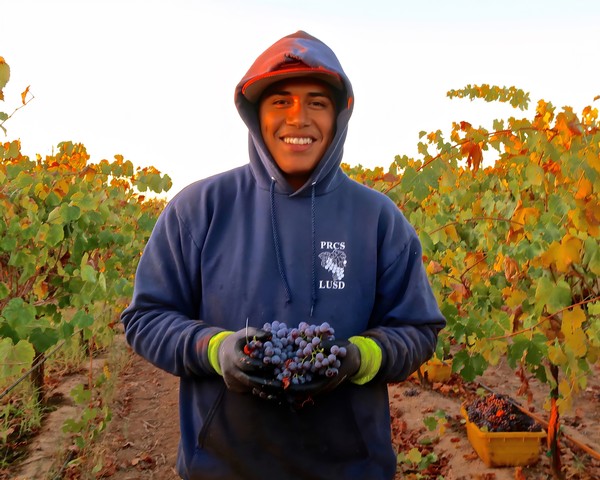
Nebbiolo picker in Anaya Vineyards' Potrero Vineyard, Clements Hills-Lodi AVA.
It is time to catch up with Anaya Vineyards, one of Lodi wine country's most interesting stories; especially since the latest release of their estate grown Nebbiolo⏤a grape native to Northern Italy's Piemonte region⏤which only adds to Lodi's growing reputation for bold, alternative, contemporary style, terroir focused wines.
If you've been a Lodi wine lover for more than a decade, you might recall that the original label for wines crafted by Anaya Vineyards owner/winemaker Gerardo Espinosa was Viñedos Aurora, established in 2009 and named after the Anaya family's first vineyard (planted in 1998) in the Clements Hills-Lodi Viticultural Area.
Accordingly, Viñedos Aurora established its reputation on the basis of deep, dark and tannin-laden vintages of Petite Sirah and Cabernet Sauvignon very much representative of the shallow, gravelly clay hillside slopes unique to Clements Hills. It is a terroir, in fact, so different from the deep, ultrafine, fluffy sandy loam and flat-as-a-pancake landscape typifying the original farmlands planted around the City of Lodi, that it served as the original impetus for the proposal to divide the Lodi appellation into seven different sub-appellations, back in 2005.
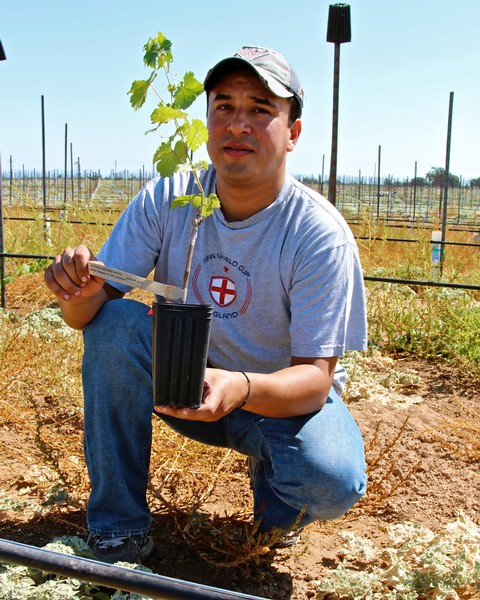
Gerardo Espinosa in 2012, planting Potrero Vineyard in Lodi's Clements Hills AVA.
Shallow clay soils produce red wines that are so different from red wines grown in super sandy soils, they may as well be made from different grapes. If anything, the original musclebound reds of Viñedos Aurora were a fulfillment of all the reasons given for dividing Lodi up into sub-appellations.
In 2019 Mr. Espinosa announced a change in direction of a sort, starting with a rebranding of his wines to Anaya Vineyards. Why? At the time, he explained:
Viñedos Aurora gave us a traditional winery image⏤more like a concept. The idea behind Anaya Vineyards is to fully embrace the family. By renaming it Anaya Vineyards, we are showcasing the fruit we grow, our family roots, and the unique soils of our vineyards in Clements Hills.
At the same time I was looking for a redesign of our labels to give us a more modern, contemporary image to appeal to a new generation of wine lovers, who want more color and texture. The Anaya labels also have more of a minimalist feel that reflects the style from my former career as an architect.

Don Victor Anaya Rocha as a teen Bracero during the early 1940s.
The Anaya story is a good one. It starts with Espinosa's grandfather, Victor Anaya Rocha, who first began traveling back and forth between California's Central Valley and Michoacán, Mexico in 1944, as part of the U.S. government's Bracero Program. During that period, Anaya Rocha raised four sons⏤Victor Jr., Ramon, Armando and Gerardo Anaya⏤all of whom earned degrees in agricultural engineering from the University of Michoacán. Settling in Lodi, the four brothers engineered successful retail stores and real estate investments on the east side of the city, before venturing into the winegrowing industry.
Mr. Espinosa is the son of Victor Anaya Sr.’s daughter, Leticia Anaya; and like his uncles before him, he grew up traveling back and forth between the San Joaquin Valley and Michoacán before finally staying put and graduating from Lodi’s Tokay High, San Joaquin Delta College, and finally Cosumnes River College with a degree in architectural design
While Espinosa enjoyed a successful career with the firm of WMB Architects in Stockton, he could not resist the call of the winegrowing industry, injected into his blood through family ties. The Anaya brothers' vineyard holdings grew to 98 acres in 2012 when they planted a second block in Clements Hills called Potrero Vineyard, adding Albariño, Pinot gris, Tempranillo and Nebbiolo to the family portfolio.
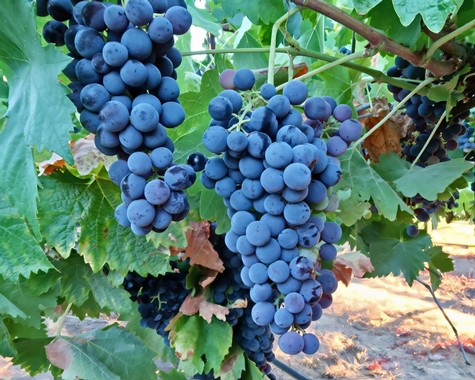
Anaya Family's Potrero Vineyard Nebbiolo at the end of July 2024.
A 2019 Anaya takes California Nebbiolo to another level
Although the Nebbiolo grape produces a robust, long lived red wine in Italy that has been nicknamed the "The King of Wines and Wine of Kings," the variety has never come close to reaching that stature in California.
The reason why Italian reds made from Nebbiolo⏤most famously, from the regions of Barolo and Barbaresco⏤are held in such high esteem is because it produces wines that are high in both acid and tannin, two of the most important keys (along with intrinsic balance) to long term bottle aging of red wines.
So far, in Lodi's Clements Hills, the grape has been producing wines that could, at best, be described as modestly full in tannin (that is, not quite as ample in tannin as in other varietals, such as Cabernet Sauvignon), but with all the acid in the world. If anything, Anaya Vineyards Nebbiolos have been plenty tart, which suits many wine lovers with a yen for sharpness in wine just fine.
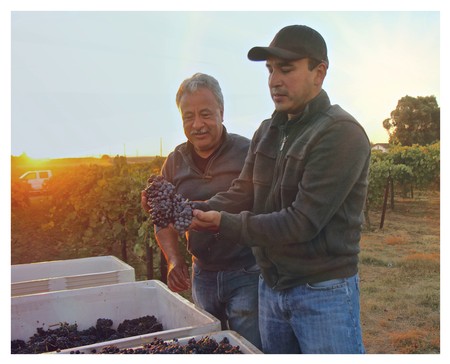
Gerardo Espinosa with Ramon Anaya harvesting Clements Hills Petite Sirah in Viñedos Aurora Vineyard.
Perhaps the most common aromatic descriptor given for the Nebbiolo-based reds of Italy is rose petal, followed by other aromas such as violet, plum, black cherry, licorice, cinnamon and truffle.
Behold the 2019 Anaya Vineyards Potrero Vineyard Clements Hills-Lodi Nebbiolo ($48): Billowing with ultra-fragrant rose petal and cherry/berry scents, carried into a super-zesty medium to medium-full body (a restrained 13.9% ABV), lanky with moderate yet firming tannin, bright and long with the crinkly floral flavors unimpeded by extraneous notes such as oak (the Nebbiolo was aged in French oak⏤80% neutral, 20% new⏤and native yeast fermented and hand-punched in small, open-top bins).
The reason why there is an Anaya Vineyards Nebbiolo in the first place is another interesting story that begins with the Anaya family's constant movement between California and Mexico up until the early 2000s. As Espinosa tells it:
During their stays in Baja California, my uncles were fascinated by the Nebbiolos coming out of Valle de Guadalupe. It was only after they planted Nebbiolo here in Lodi that they found out that most of the grapes called Nebbiolo in Mexico are not the same as Nebbiolo in Italy, although I'm told there is now some true Nebbiolo planted in Mexico.
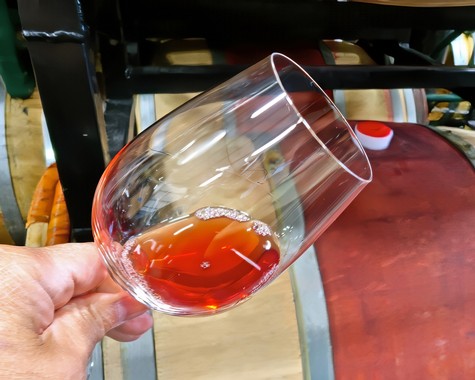
The transluscent brick-red color typical of Nebbiolo in Lodi Crush winery.
What my uncles loved were how dark and jammy in black fruit characteristics the Mexican Nebbiolos were. When we started making wine from our own Nebbiolo we discovered that the grape never produces a dark colored or jammy wine. It is always a light colored, flowery wine, more like Pinot Noir, although with more tannin and acid.
In California, Nebbiolo is also known as a very difficult, low yielding grape, which is why it has never been popular here in the United States. In our vineyard, it’s been growing very well, easily producing at least 3 tons per acre.
The challenge for us has been more about discovering what its true identity is in California. We grow in rocky red clay soil, which helps the grapes retain the tannin and acidity the varietal is known for. The nice thing about Nebbiolo is that you never need to adjust the acidity, unlike most grapes, and the wine requires a minimum amount of SO2 [sulfur dioxide]. So what you are tasting in our wine is a true expression of the Nebbiolo grape, and a true expression of the Clements Hills soil and climate.
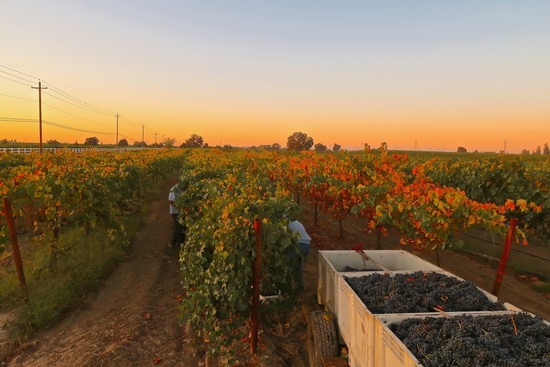
Clements Hills Tempranillo harvest in the Anaya family's Potrero Vineyard.
Other Anaya Vineyards Clements Hills innovations
It is natural that, because of their Mexican-American roots, the Anaya family also became interested in the two Spanish grapes that have become immensely popular in Lodi: Albariño and Tempranillo. Espinosa put his own spin on both varietals.
First, the 2021 Anaya Vineyards Potrero Vineyard Clements Hills-Lodi Albariño ($32) is 100% barrel fermented and aged in neutral French oak barrels, as opposed to almost all other Lodi Albariños which never see a second in oak. The result is a fleshier, creamier style of the varietal, although it still retains some of the flowery and minerally qualities of the grape, along with its characteristic tart-edgy acidity. Think of either wood grilled fish or seafood served in buttery beurre blanc.
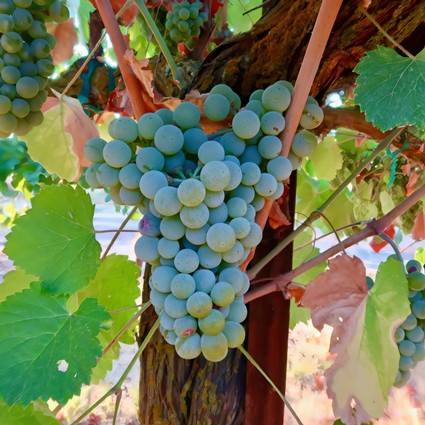
Albariño in the Anaya family's Potrero Vineyard at the end of July 2024.
Espinosa also seems to favor more of a lean, gangly style of Tempranillo in stark contrast with the predominant style of Lodi grown Tempranillo, which emphasizes the bright, flowery, red berry/cherry spectrum of the varietal character. As such, you could describe the 2019 Anaya Vineyards Potrero Vineyard Clements Hills-Lodi Tempranillo ($42) as almost Rioja-like, in reference to the famous Spanish style which accentuates more sweet oak qualities and less red berry fruitiness. All the same, the wine comes off as finely balanced if edgy in its dryness and tannin stiffened tightness⏤think wood charred lamb, venison or bison with bell peppers to highlight its contrarian Lodi style.
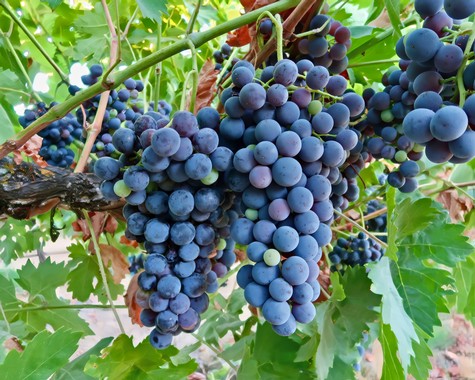
Tempranillo in the Anaya family's Potrero Vineyard at the end of July 2024.
Next month (in September 2024), though, Espinosa does plan to release a 2022 Anaya Vineyards Potrero Vineyard Clements Hills-Lodi Semi-Carbonic Tempranillo ($36), a whole cluster/berry fermented style crafted to do a 360 and emphasize a super-fragrant wild berry (strawberry/blackberry) varietal profile, on top of a lighter feel (just 12.8% ABV) offsetting densely textured fruit qualities on the palate, giving the wine a little more food versatility (either red meats or grilled red fleshed fish).
Longtime followers of the original Viñedos Aurora brand can still find solace in the full bodied, densely packed qualities associated with the Anaya family's original planting in Viñedos Aurora Vineyard: The formidably dark, meaty, oak enriched 2019 Anaya Vineyards Viñedos Aurora Vineyard Clements Hills-Lodi Cabernet Sauvignon ($48), and the almost black colored, smoky and sinewy textured 2019 Anaya Vineyards Viñedos Aurora Vineyard Clements Hills-Lodi Petite Sirah ($42). As you would suspect, both reds make excellent grilled steak wines, although Mexico-inspired mole sauces would make the steaks even better matches with the type of deep color, tannin and earthiness intrinsic in red wines grown in Lodi's Clements Hills.

The Anaya family's Viñedos Aurora Vineyard in Lodi's Clements Hills AVA.